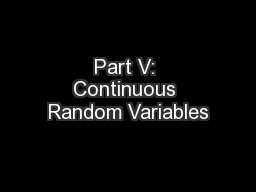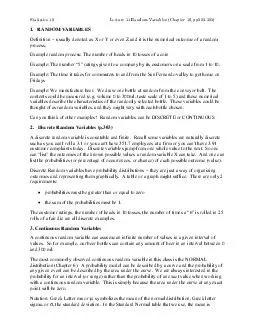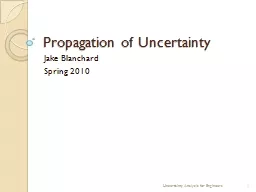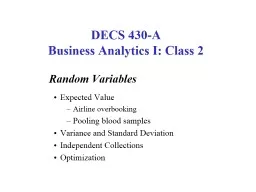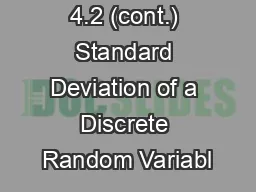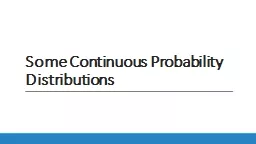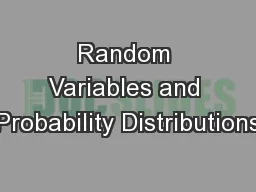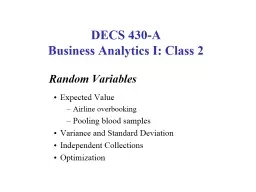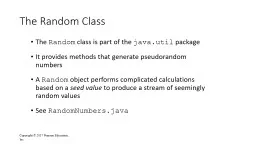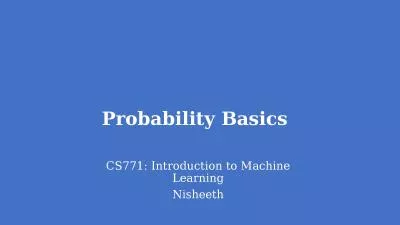PPT-Part V: Continuous Random Variables
Author : natalia-silvester | Published Date : 2017-08-04
http rchsbowmanwordpresscom20091129 statisticsnotesE28093propertiesofnormaldistribution2 Chapter 23 Probability Density Functions http divisbyzerocom20091202 anappletillustratingacontinuousnowheredifferentiablefunction
Presentation Embed Code
Download Presentation
Download Presentation The PPT/PDF document "Part V: Continuous Random Variables" is the property of its rightful owner. Permission is granted to download and print the materials on this website for personal, non-commercial use only, and to display it on your personal computer provided you do not modify the materials and that you retain all copyright notices contained in the materials. By downloading content from our website, you accept the terms of this agreement.
Part V: Continuous Random Variables: Transcript
Download Rules Of Document
"Part V: Continuous Random Variables"The content belongs to its owner. You may download and print it for personal use, without modification, and keep all copyright notices. By downloading, you agree to these terms.
Related Documents

